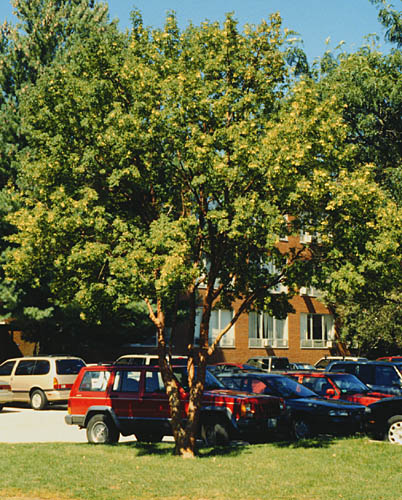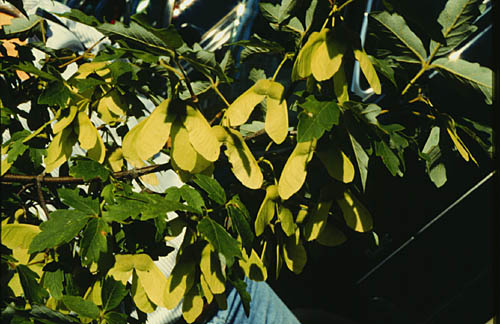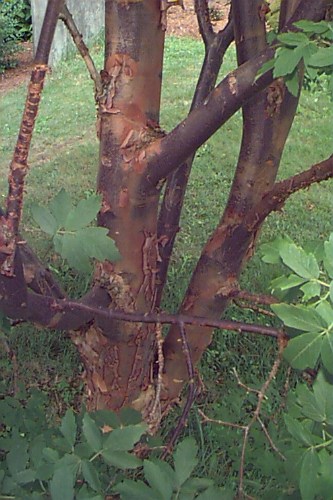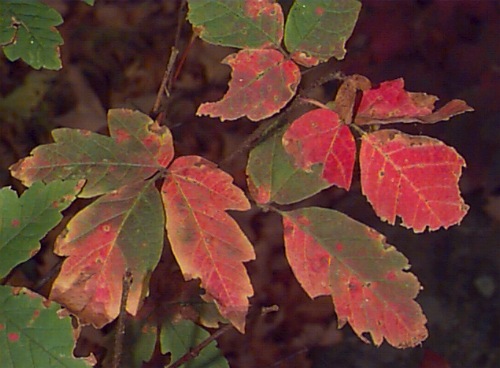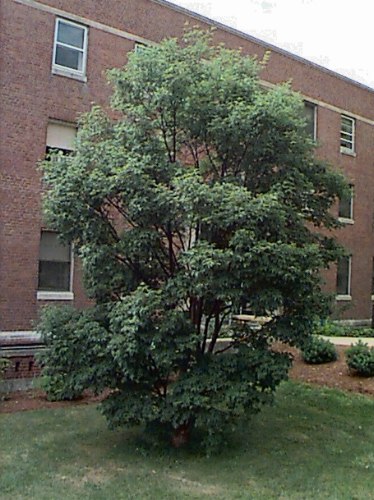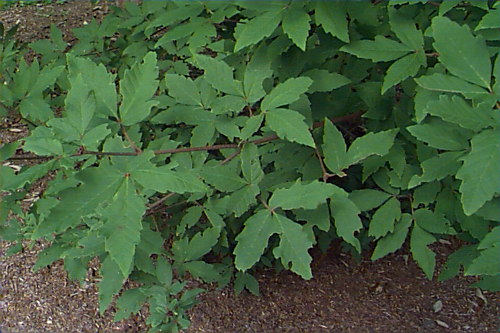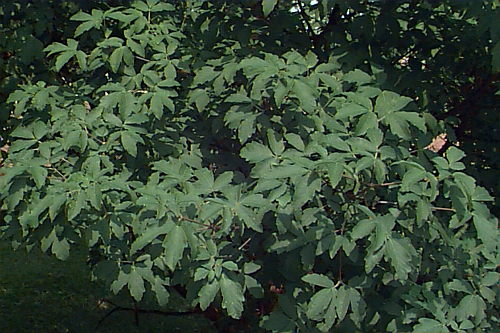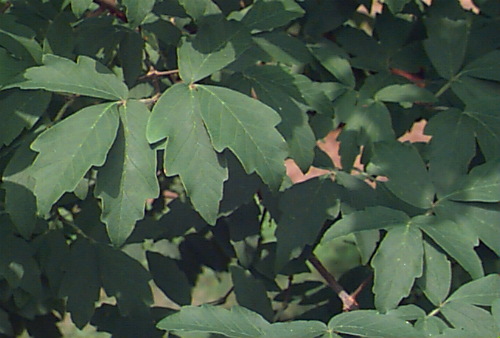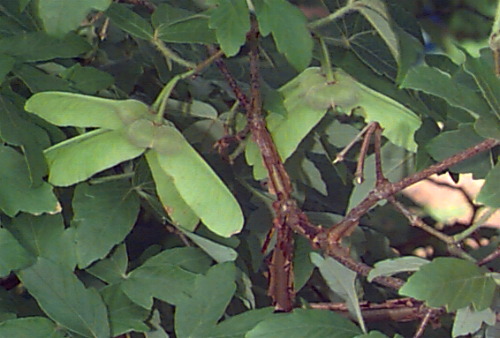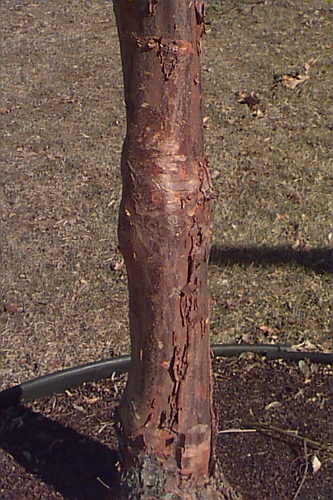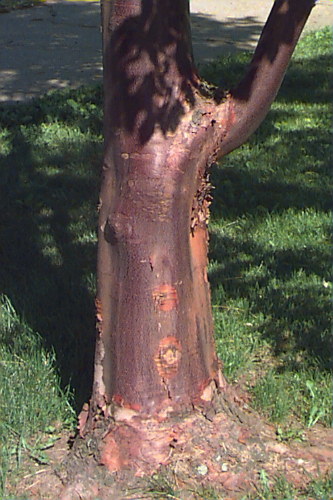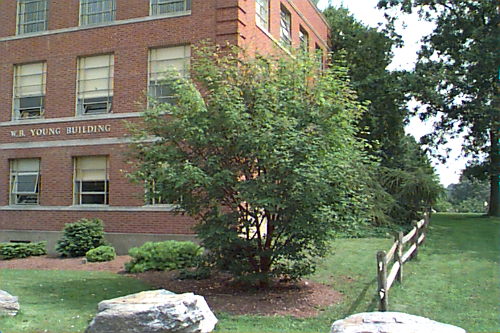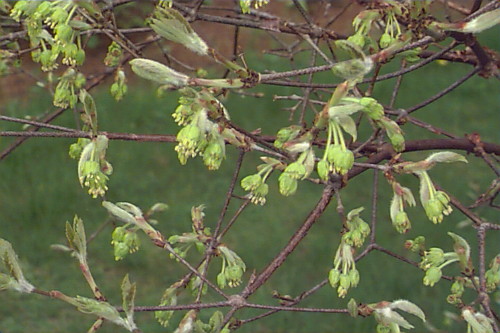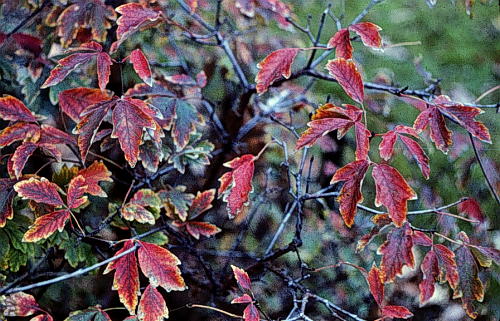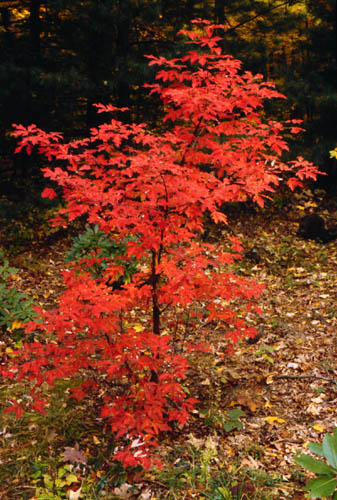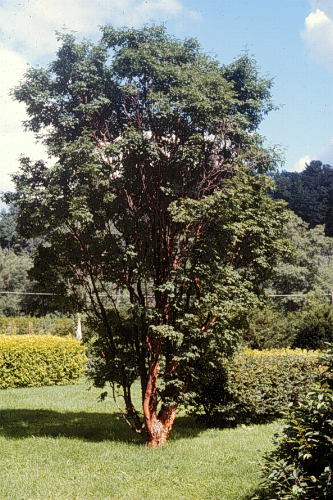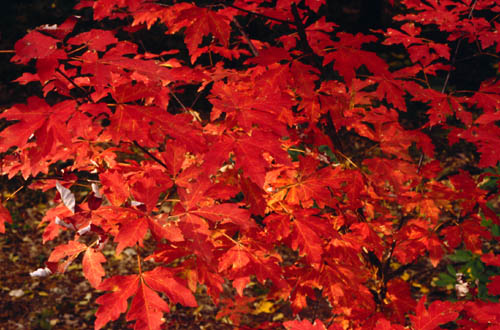Acer griseum
Paperbark Maple
Aceraceae
ExpandHabitat
- native to China
- zone 4
Habit and Form
- to 30' tall, small tree
- deciduous
- shape is oval, upright or irregular
- short main trunk with several secondary, more or less upright scaffold trunks
- texture is fine to medium
- slow growing
Summer Foliage
- opposite, trifoliate leaves 3" to 5" long
- soft, blue-green color, almost frosty or white on underside
Autumn Foliage
- can be a pronounced red, but frequently is green with red overtones on exposed leaf surfaces
- last trifoliate maple to color
Flowers
- green, inconspicuous
Fruit
- samaras, 1.5" to 2" long, pubescent nutlet
Bark
- exfoliating cinnamon-brown bark, peeling in thin sheets and also polished smooth in places
- very attractive bark, a strong ornamental feature
Culture
- relatively pest free
- prefers a moist, well-drained, slightly acidic soil
- full sun or partial shade
Landscape Uses
- specimen
- possibly in mini-groves
- edge of woods
- good choice for small yards
Liabilities
- may be somewhat expensive
- once rare and pricey, but becoming readily available
ID Features
- trifoliate leaves and exfoliating cinnamon-brown bark
- buds sharply pointed and dark purplish-brown
Propagation
- by seed, but only around 5% of the samaras are viable
- has been grafted on Acer saccharum with some success
- cuttings from hedged, seedling (juvenile) plants can be rooted
Cultivars/Varieties
Hybrids between A. nikoense and A. griseum have been cultivated. Dr. Sid Waxman, University of Connecticut, has selected such a hybrid and named it 'Cinnamon Flake'. This attractive plant features bark that flakes in smaller strips than the species. The stem surface often appears pleated like corduroy.
'Ginzam' (Gingerbread™) - A hybrid of A. griseum and A. nikoense that features fine bark and a faster growth rate than the species, maturing at 30' tall. A tree with these traits may hold great promise in the future.
